This article has been republished with the the author's permission. It was initially published on the Orange County Sheriff's Office Composite Drawings Web site.

|
|
COMPOSITE DRAWINGS
Composite drawings are the main function of the forensic
artist, also known as a "sketch artist," or "police artist."
Composite drawings are drawings done by an artist at the direction
of a witness or victim, of someone they saw committing a
crime. Composites are a conglomeration of features that make
up a generic person. They are a witness, or victim's, memory
of a real person recalled to the artist for rendering.
|
|
Successful Composites,
This artistís techniques
|
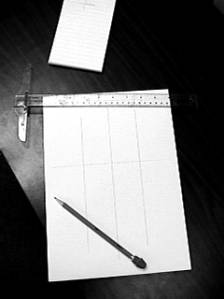 |
I start the drawing by having
the witness go through the FBIís FIC (Facial Identification Catalog)
feature by feature. I always start by having the witness look
through the FIC for the shapes of the suspectís head, or face. This is very important
because the shape of the head is one of the three main components to
getting close to the suspectís actual look. I stress itís importance. I
set my drawing up on my paper before every composite. This is also important
because it keeps all the drawings to a certain scale and helps with
symmetry. |
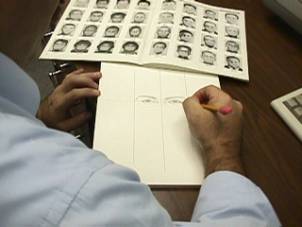 |
I then move on to the
suspectís eyes. I rush
the witness just a little bit so they donít make themselves crazy
looking at all the different eyes. I explain the importance of
choosing only the closest set of eyes. I let the witness know
features can be changed, or fine-tuned, when the line drawing is
completed. I make sure
the witness understands they should concentrate but not get
frustrated by all the choices.
|
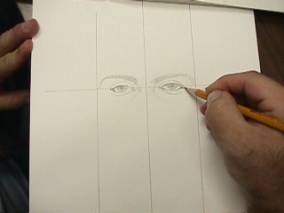 |
Once they choose a set of
eyes, I sketch in the eyes and eye brows of the eyes they
chose. I donít want to
nit-pick them on features.
Eyebrows donít normally make or break a likeness so, if they
remember specifics I will note it, if not I skip the eyebrow
section. |
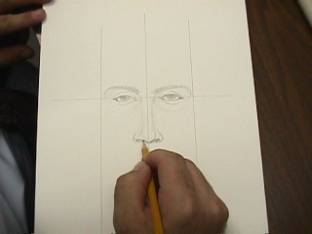 |
I use a regular
#2 pencil because it is harder than my finishing pencil, erases
easier, and draws lighter.
I have the witness start looking at noses while I sketch the
eyes. I draw the nose
while I have the witness looking for a mouth.
|
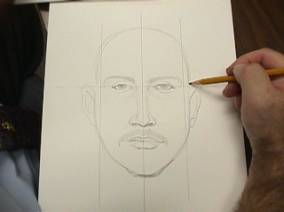 |
I draw
the mouth while the witness looks through the chins. I draw the chin and sides of
the face, after referring back to the shape of the face. I always draw the top of the
head with just the forehead.
I always put generic ears on, unless they were a feature the
witness remembered specifically.
|
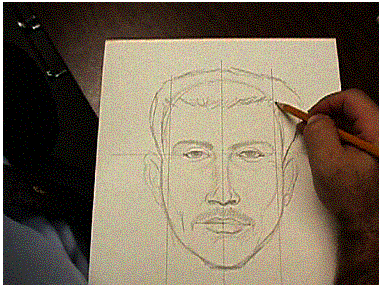 |
I get the witness to find
the hairstyle somewhere in the book. Once the line drawing is
completed I have the witness look it over. I make changes by erasing
with the kneadable eraser and re-sketching until the drawing is as
close to the suspect as the witness can remember. I have the witness rate the
line drawing on a scale of one to ten, "ten" being a portrait
(really close), and "one" being no where near close. Now, with the line drawing
as close to the suspect as the witness can remember, I add skin tone
and shading.
|
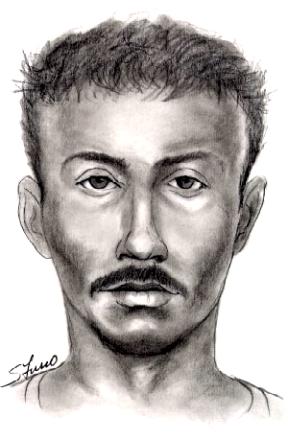 |
I use a 9b
woodless pencil because it is soft, goes on dark, and smudges
easily. I get good
contrast between lights and darks. Shading takes practice. Achieving a good skin tone
is important because it will make the composite believable. After,
the composite has skin tone it should appear closer in the rating
scale, or at least no change. |
|







